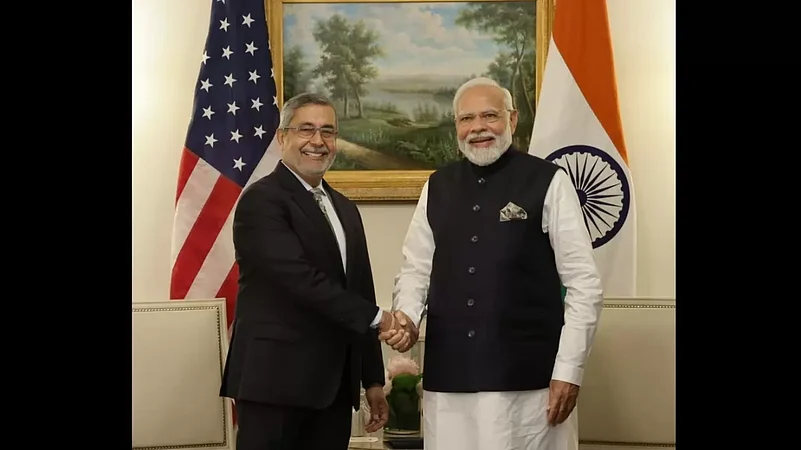Indian efforts in the past with respect to the semiconductor sector did not reach fruition due to a lack of a comprehensive policy and a well-defined programme. The Indian Semiconductor Policy in 2021 laid the bedrock of this endeavour with the best-in-class incentives by the government to support design, packaging, manufacturing, R&D, talent and capability building. The establishment of Micron facility is the very first of the watershed approvals.
On careful scrutiny, a large number of facets emerge historically. Taiwan Semiconductor Manufacturing Company (TSMC), the global behemoth in manufacturing chips was funded by the Taiwanese government on its inception, with the government having a stake in its IPO launched a decade later. This is a global phenomenon in technological and strategic projects which are intrinsic to high investment, high risk dynamics with large margins of error and scarce availability of investors.
Advertisement
It is also significant that China, too, embarked on the semiconductor trajectory by focussing on electronics sector with a keen interest on Assembly, Testing, Marking and Packaging (ATMP) facilities and Outsourced Semiconductor Assembly and Test (OSAT) facilities. In the present metrics, China statistically caters to 38 per cent of the global share in ATMP/OSAT business. It is a well-known fact that ATMP is a critical pillar of the entire semiconductor value chain, and it is a natural progression towards setting up of semiconductor manufacturing, besides incorporating necessary quality standards and integrating the country with well-established global supply chains.
A thriving chip ecosystem requires design competency, access to current thresholds of technology, low manufacturing costs, assured markets and financial sustainability to cater for disruptions and down turns which are unpredictable. There are a large number of advantages which will accrue for the entire industry with Micron facility getting operational by the end of next year.
Advertisement
What Micron Brings
Looking at the macro picture, India imports memory products estimated at $11 billion each year which are used in nearly all electronics and computing devices. This will reduce dependence on these exports besides providing the confidence to global semiconductor companies and setting up a complex supply chain ecosystem in the country which is critical for the future.
Micron’s new facility will enable assembly and test manufacturing for both DRAM and NAND products, and the project will create nearly 5,000 direct and 15,000 indirect jobs. While some may argue that setting up of these facilities should be viewed in terms of strategic significance and not jobs, ATMPs, unlike fabrication facilities, are more manpower intensive and could also give an impetus to the development of semiconductor manufacturing skills among young engineers. Successful ATMP operations will result in the development of a skilled labour force for a country which is likely to assume the youngest demographic profile by 2025, the indigenisation of the supply chains, and the eventual establishment of other forms of manufacturing operations.
Government of India’s approval to Micron proposal will ensure infusion of latest technologies such as wire bonding, post fab wafer finish and direct chip attach. This will further accrue a greater understanding of materials used in advanced microelectronics as well as conducting acceptance and testing procedures in this domain by the workforce employed in this facility. It has to be carefully understood that success of initially established facilities will be the very bedrock for this complex sector with a large gestation and payback periods.
Lessons From The Past
The Indian automobile sector has become the third largest in the world today which started from scratch and the setting up of Maruti Suzuki was a major turning point in this success story. It is highlighted that chip market in the automotive segment, worldwide, consumed $44 billion worth of products. The case in point to be carefully studied is of the mobile revolution in India which has increased by leaps and bounds and is likely to grow at a CAGR of 9.7 per cent. With these two sectors heavily dependent on chips, it is time to create capacities with viable, financially robust and well-established global entities.
Advertisement
Texas Instruments set up a centre at Bengaluru, way back in 1985 as a greenfield destination and today 20-25 per cent of design is centered in India, besides high technology job opportunities. These are lessons from the past. Capability development takes years of work, policy formulation and timely interventions, while intentions can change overnight.
Technology is often aligned to the contours of geopolitics, and it is costly to adapt, improve and innovate. The fulcrum of technology adoption and setting up of high technology facilities, therefore, needs capital investment and astute policies. There are varied arguments which look at the merits and demerits of Micron establishing the ATMP facility in Sanand, Gujarat but what needs to be understood is that ‘Well Begun is half done’.
Advertisement
(Anurag Awasthi is Vice President, India Electronics and Semiconductor Association (IESA). Views expressed are personal.)















 Just one email a week
Just one email a week